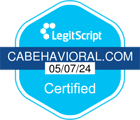How to Pay for Drug and Alcohol Rehab in SoCal Without Insurance
Paying for rehab without insurance in Southern California can be daunting. You may be faced with higher out-of-pocket expenses. However, there are a variety of options to help manage the financial burden of rehabilitation. We encourage you to call California Behavioral at (888) 355-1676 to explore some of the options listed below. This can help provide an accessible and affordable path to recovery.
Government-Sponsored: If you do not qualify for private insurance through the Marketplace or an employer, you may be eligible under federal programs like Medicaid or Medicare. Both government programs cover substance abuse treatment for those who meet the eligibility criteria.
Sliding Scale Fees: Many rehabilitation treatment centers adjust costs based on the individual’s ability to pay for services. This helps ensure access to rehabilitation for those at different income levels. To qualify for sliding scale fees, you must present documentation of your income level, which might include a pay stub or the previous year’s tax statement.
Payment Plans: Rehab center payment plans help spread the financial burden over many months. These structured payment plans allow you to pay for treatment in manageable installments.
Personal Loan: A personal loan is how to pay for rehab up front while seeking financial assistance. Further financial assistance can help pay off personal loans for rehab early and reduce your financial burden.
Grants and Scholarships: Various research organizations offer grants and scholarships designed specifically for individuals who require rehabilitation and detox for substance abuse. Many of these organizations understand the benefits of sobriety to the individual and the community. Grants and scholarships are usually need-based and do not need to be paid back.
Crowdfunding: Online platforms like GoFundMe, OneCause, or Donately are set up to help individuals raise money from the community. This can be used to help cover the cost of rehabilitation, health and medical bills, and costs associated with addiction recovery. Only certain sites allow crowdfunding for rehab, so be aware of the rules before starting your account.
Employee Assistance Programs (EAP): Some employers provide EAPs that include support for substance abuse treatment. Check with your HR department for employer-provided benefits for rehab that may help cover the cost of treatment and provide assistance in the community for yourself and your family.
State-Financed Options: California has state-funded programs outside of Medicaid that provide addiction treatment services at little or no cost to residents who qualify for the programs. This government assistance for rehab can help support your road to recovery and provide the therapy and counseling you need.
Non-profit organizations: Non-profit organizations sometimes offer subsidized treatment services using donations and grants that allow them to provide help at a reduced cost. Look for non-profit organizations offering rehab funding by searching online. Consider contacting some of the non-profit organizations in your local area as well.
HSA or FSA: Health Savings Accounts (HSA) or Flexible Spending Accounts (FSA) can be used to help pay for rehabilitation treatment. This utilizes your pre-tax dollars to help cover health-related expenses, including medication-assisted treatment, therapy, and counseling.
Friends and Family: Don’t overlook the potential support from friends and family who may be willing to help financially or offer other resources that make treatment accessible and possible. Your friends and family are invested in your future, and many are willing to help you overcome the financial challenges of seeking sobriety.










